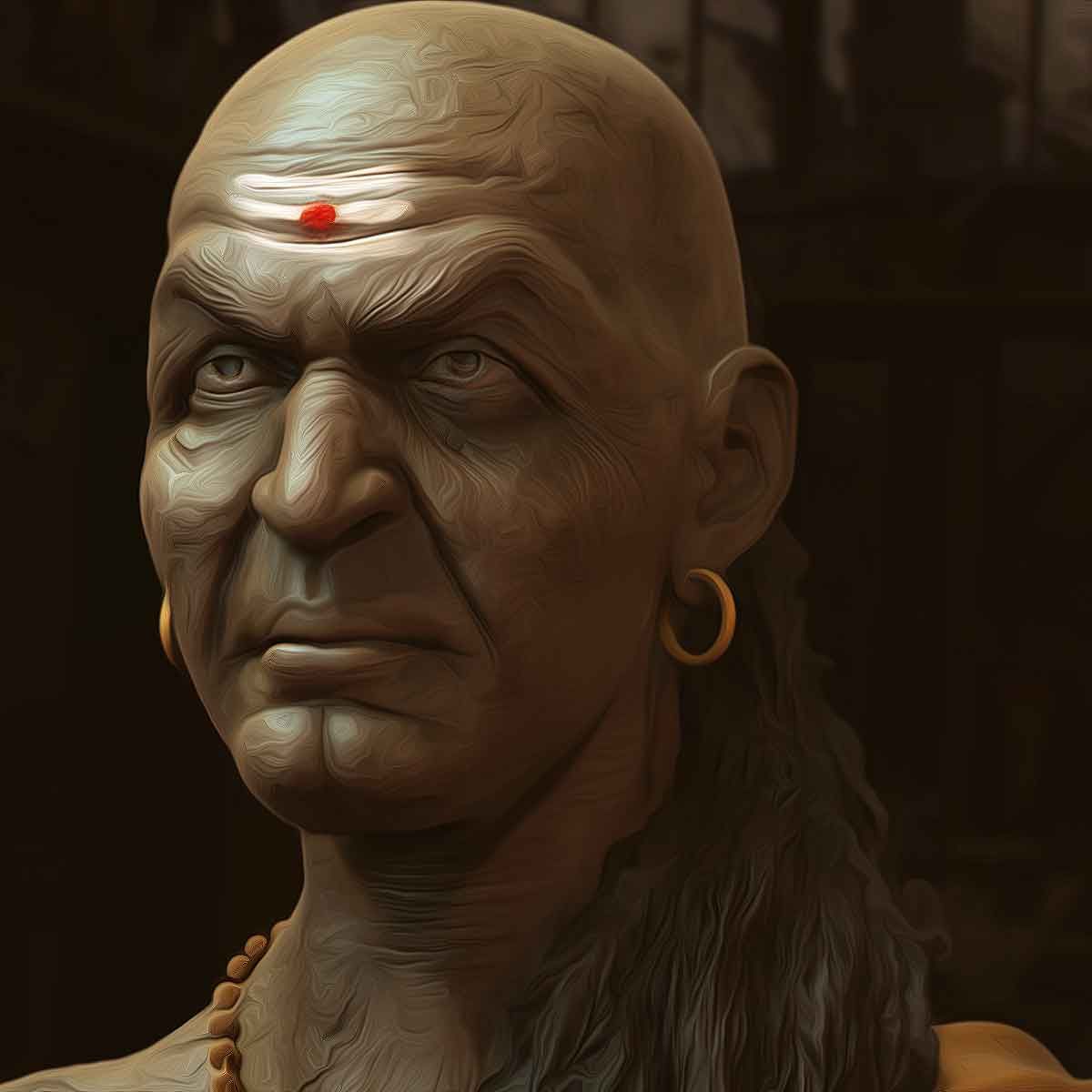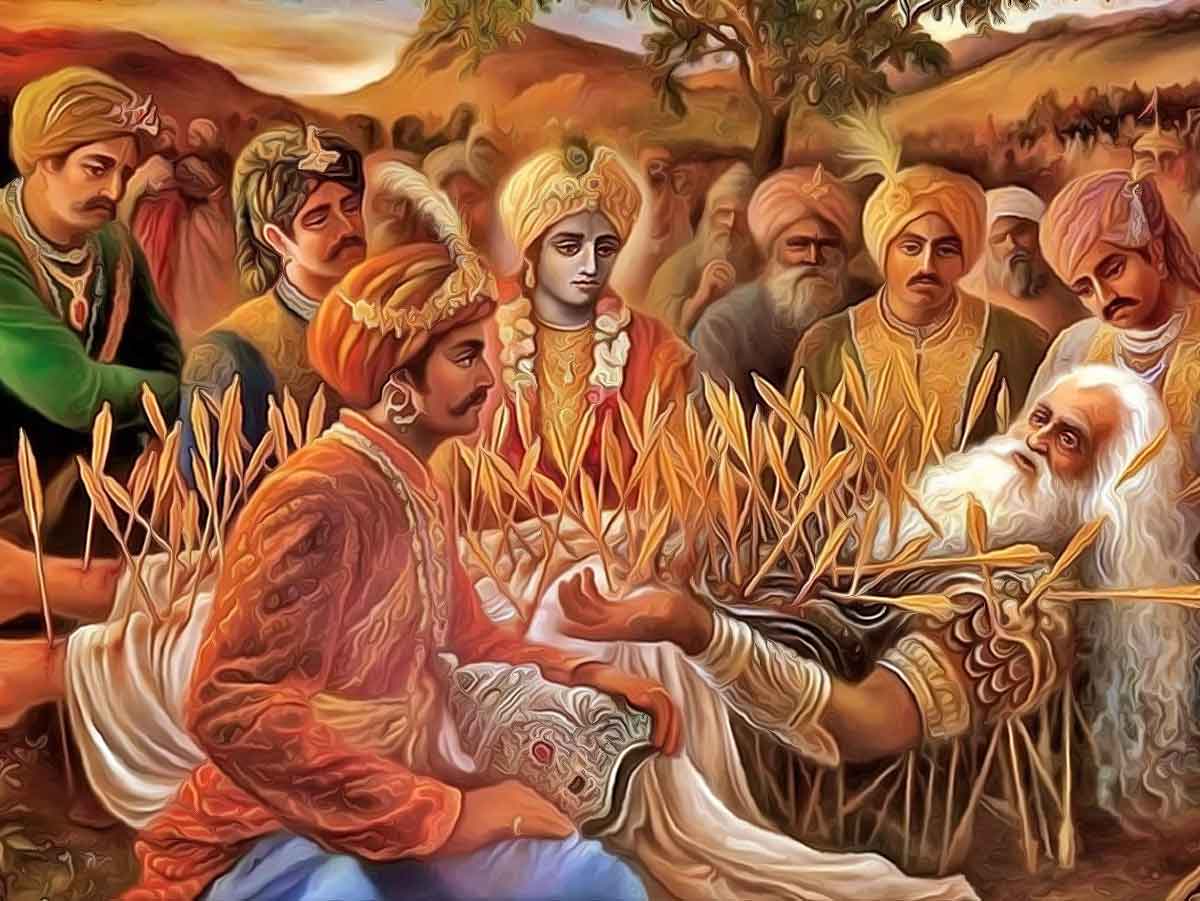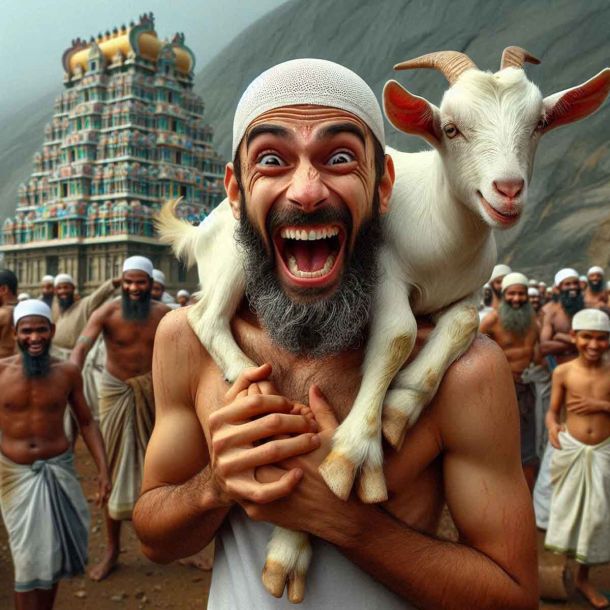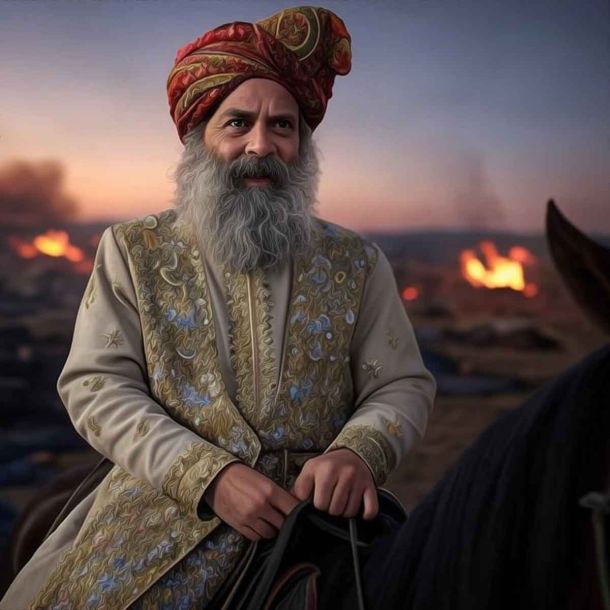More Coverage
Twitter Coverage
Satyaagrah
Written on
Satyaagrah
Written on
Satyaagrah
Written on
Satyaagrah
Written on
Satyaagrah
Written on
Join Satyaagrah Social Media
“Dharma is law in its widest sense—spiritual, moral, ethical and temporal": How Chanakya's Arthashastra shaped the Telling of Ancient Indian History and should be read simply for its sheer brilliance in the area of statecraft and economics

The Arthashastra is so much a part of modern Indian vocabulary on politics, economics, and society that it is hard to imagine that this was a book unknown to the English-speaking world until an old manuscript was discovered in 1904. It was translated and presented to the world by R. Shamasastry of the Mysore Oriental Research Institute in Sanskrit, in 1909, and in English in 1915.
It created a storm for all the wrong orientalist reasons— similar to the upheaval caused by the discovery of remains in Harappa and Mohenjodaro. In that case, history was known to have begun with Alexander’s arrival in India. So what was to be made of the spectacular ruins on the banks of the Indus and lost Saraswati, dating to millennia before 323 BCE? Similarly, finding an ancient Indian treatise on statecraft and economics upset the ideas of the rulers about the uncivilized and unsophisticated nature of the colonized Hindus.
Since then, the Arthashastra has enjoyed a revival of sorts with its precepts being used and quoted in books on history, economics, politics, management, religion, spirituality, and any other subject on which books are written in English. A cursory search of the internet will throw up pages of purported quotes from Chanakya, many of them being untrustworthy.
What Exactly Is The Arthashastra?
It is a treatise on artha written about 2,300 years ago and attributed to a person named Kautilya. It consists of 15 adhikaranas or books, mainly in prose, with 380 shlokas occurring at the end of the various chapters. The first sutra contains the statement that the Arthashastra was composed by bringing together all treatises on this subject written by earlier authors. It is, therefore, a compilation.
It can be thought of as an encyclopedia of information on the ancient Indian world, the subjects ranging from kings to spies and ministers, from cotton to spices and pearls, from inheritance to divorce and municipal law, foreign relations to forts and cities, magic incantations to justice and political administration.
It has most immediately been associated with the Mauryas. Legend has it that Kautilya or Chanakya, a pundit, was humiliated by the Nandas and took an oath to extirpate them. He sees the qualities of kingship in a young goatherd, adopts and brings him up to be a warrior and a statesman, and then when the young boy reaches adulthood, the two of them together establish Mauryan rule over Jambudwipa. The young boy was, of course, Chandragupta Maurya.
 Chandragupt Maurya |
Legend also has it that he explored the science of the Arthashastra to make it a weapon against the Nandas and wrote it during the long years before he finally overthrew the Nandas with Chandragupta, and the nucleus of an army collected from Swat. Interestingly, the Sanskrit play Mudrarakshasa by Vishakhadatta (fourth century CE), which tells the story of Chandragupta’s accession to the throne, describes events that could be straight out of the Arthashastra playbook of defeating enemies— if we indeed accept it as a historical play based on Mauryan times.
Along with the Indika and the inscriptions of Ashoka, the Arthashastra has often been cited as an important source for understanding Mauryan times. As is often the case with ancient Indian history, which is a battleground for different ideologies and persuasions, the date and authorship of the Arthashastra are also the subjects of many controversies. Who was it written by and when? Does it describe Mauryan times or not? What kind of society is it set in?
Answers for these questions range across a spectrum with the date of the Arthashastra being posited from as early as 600 BCE to as late as the fourth century CE, and the book is attributed to a person named Kautilya, or someone else, or to multiple others. A useful way to look at this is in the words of the 17th-century German Indologist, H. Jacobi:
Without weighty grounds, one must not push aside the unanimous Indian tradition; else one practices skepticism, not criticism.
Notwithstanding this advice about accepting Indian historical tradition, most Indologists have followed it only in the breach, as will be the case when imported historiography is followed without any criticism. There have been repeated attempts to provide “evidence” to “prove” that the Arthashastra was not written by Kautilya but by many others, that it has nothing to do with the Mauryan period, and so on.
R. P. Kangle’s seminal work on translating and studying Arthashastra, in 1965, remains the gold standard on this issue and has, in Volume III of the series, comprehensively addressed and proved the Indian tradition. Various theories have been floated after that too.
An attempt was made by Thomas Trautmann in 1971 to “prove” that different people had composed the different parts of the Arthashastra by counting the number of times “or” and “and” were used in the different books, on the basis that different writers would throw up different numbers of these frequently occurring words. Trautmann himself admitted that this could be tested but not proved. The efficacy of this method; in general, and specifically for analyzing a book written in archaic Vedic Sanskrit with pre-Paninian grammar, is still the subject of controversy and can only be negligible as was effectively demonstrated by S. N. Mittal. It was seen that the number of these words differed, according to context, and often within different chapters of the same book.
There have been new attempts by Patrick Olivelle and Mark McClish to place the book during the Saka Kushan period and understand the Indian tradition as a branding exercise by the Guptas who wished to project themselves in the mould of the Mauryas. A detailed critique of this exercise will have to wait for a future article; suffice to say that much evidence had been misread and leaps of faith have been taken which mar some of the insights provided by this new translation. If the views are framed in binary terms of “exploiter” and “exploited” with the “Brahmanical” order as the villain of the piece, the conclusions are bound to be biased.
An oft-repeated objection is that the only mention of a connection with the Nandas, not even the Mauryas, is in one of the concluding shlokas which say that this treatise was composed by the one who rescued the shastra, the weapons, and the land from the Nandas. There is no mention of Chandragupta or the Mauryas or Pataliputra. To expect any such mention is to misapprehend the text, which is a theoretical work, and mentions people and places merely as examples, it does not set out to describe the Mauryas of Pataliputra.
For instance, Madurai is mentioned in connection with cotton, Nala, and Udayana as illustrations of kings who recovered a lost kingdom. Udayan, the king of Koshambi was a famous and much-written king of the sixth century BCE or thereabouts. An example of the ideal romanticized monarch, he is the hero of the famous story cluster of the Brihatkatha of similar antiquity and it seems that the ubiquity of his fame included the Arthashastra.
For the confusion between the names Vishnugupta, Chanakya and Kautilya the explanation is simple; the first was his given name, the second his patronymic and the last was the gotra name.
Let us now move on to a consideration of the book itself. The Arthashastra begins with an invocation to Brihaspati and Shukra and is concerned with the study of artha which is the “sustenance” or “livelihood” (vrittih) of men. It is the science that is the means of the acquisition and protection of the earth.
Artha is one of the goals of individual human existence— dharma, artha, kama and moksha. Understood in the extended sense of the earth where men live and seek well-being, it assumes the goal of the well-being of men, in general. Since it is the state alone that can make such general well-being possible the protection of the earth and its acquisition, which are an essential part of state activity, are declared to be the province of the shastra.
Thus, the Arthashastra has a twofold aim, palana or “administration of the state” and labha or “acquisition of territory” which would include foreign policy considerations. In other words, it is the science of statecraft or of politics and administration. Arthashastra and Dandaniti or Nitishastra have the same scope but the origins of this shastra are obscure.
An account of its supposed origin is found in the Shantiparvan of the Mahabharata. When human society became chaotic and anarchic from its previous idyllic state during Satyuga, the gods approached Brahma and he wrote a treatise on nitishastra to guide humanity— having almost one lakh of chapters. This was reduced to 10,000 chapters by Lord Sankara as the Vaisalaksha Shastra, then to 5000 chapters by Lord Indra as the Bahudantaka Shastra, to 3000 chapters by Brihaspati as the Barhaspatya Shastra, and then by Usanas to 1000 chapters as the Ausanas Shastra.
 Shantiparvan recites a theory of governance and duties of a leader, as explained by a dying Bhishma to Yudhishthira |
Shorn of the celestial connections, it gives us references to historical persons also referred to in other works of antiquity. Brihaspati and Usanas/Shukra were the prototype purohitas, for the devas and asuras respectively and, therefore, expected sources of niti or arthashastra for kings. There are numerous references to Brihaspati and Shukra in many early sources such as the Rigveda. The Arthashastra frequently mentions Visalaksha and Bahudantiputra so they are likely to be real people and early theorists of arthashastra as well.
Kautilya’s Arthashastra is the oldest work on the subject that has come down to us but it is a culmination of older traditions and schools of thought which are often referred to in the text. Kautilya enumerates the views of the old school and then critiques and offers his own opinion on the subject. Following R.P. Kangle’s translation, the treatise itself can be described.
The Books Of The Arthashastra
It consists of 15 adhikaranas or books, the first five deal with tantra or the “internal administration of the state”, the next eight deal with avapa or its “relations with neighbouring states” and the last two are miscellaneous in character.
The first book deals with the training and equipment of the king as a ruler, and being a “Kautilyan King” is no mean task. He cannot sleep for more than four hours a day and has a full and punishing routine for the rest of the 20 hours.
Book Two deals with the activities of the state in various fields. 34 departments are described with activities ranging around the fields of agriculture, forestry, cattle, horses, elephants, yarns, liquor, army, issue of passports, trade, customs, shipping, etc.
Book Three sets down a code of law, the fourth deals with the suppression of crime, kantakashodhan, and the next book deals with some miscellaneous matters including an interesting list of the salaries to be paid to royal officials. The high and the mighty like the purohita and the queen were paid 48,000 panas while palace servants received 60 panas and spies received between 500 and 1000 panas depending on their rank. Those aspiring for high or royal positions could read this book and would have received good advice on how exactly to achieve their ambition.
Moving to the section dealing with external relations, Book Six defines the seven necessary constituents of a state— the king, the minister, the country, the fortified city, the treasury, the army, and the ally. This book also includes the famous “rajamandala theory.”
The next book discusses the six gunas or measures of foreign policy to be used in different situations. Since the goal of foreign policy for the king, the conqueror or vijigishu, is the conquest of the world, there is a description of various ways in which rivals may be outwitted by stratagems or overcome by force.
Book Eight is concerned with vyasanas, that is, calamities that have to be overcome before any aggressive activities can be taken.
Book Nine deals with preparations for war and Book ten with fighting, describing the army, battle arrays, and various modes of fighting. The next book explains how to subdue sanghas.
Book 12 tells a weak king the ways in which he can defeat a strong king.
Book 13 is concerned with the conquest of the enemy’s fortified capital and how the conquered territories should be ruled.
Book 14 deals with occult practices and secret remedies and Book 15 defines and illustrates from the text itself the 32 tantra yuktis or “methods of treating a subject.”
Kautilya is, above all, a practitioner of realpolitik and power. He is a close observer of the minutiae of society, polity, and economy and its enumerator to an exhaustive degree. Few aspects of life have escaped his eagle eye. Everything is classified, listed, and detailed in what are extremely tedious chapters— part of the Indian obsession with classification seen in many archaic and medieval works.
It is not possible to deal with the voluminous material in any detail in an article, the reader is invited to read the Arthashastra for herself; this article will conclude with an interesting description of the role of spies in upholding the Kautilyan state.
Kautilya is often portrayed as unscrupulous and “crooked”, supposedly the root for his name, kutil, from whence is derived Kautilya. Unnecessary and misplaced comparisons with Bismarck and Machiavelli may have contributed to this perception. The treatise is relentlessly focused on power and how to wield it; how to acquire territory, bring economic gains to the state through the extension of agriculture, taxation, etc.
However, it never loses sight of the fact that artha is rooted in dharma, and in the welfare of the subjects lies the welfare of the king. “Praja sukhe sukham rajnah prajanam cha hite hitam” is a famous maxim from the Arthashastra. The approach is ruthless and unsentimental but the goal of dharma is never lost sight of.
The System Of Espionage
It describes a voluminous bureaucracy to control the behemoth state for the good of the praja. An omnipresent, ubiquitous, and powerful secret service of spies is the mechanism for controlling this behemoth.
In the first book itself, there is an extensive description of the appointment of different kinds of spies. There were special rules for them and the occupations and an enumeration of the social categories from which they should be drawn, which was pretty much all sections of society; pupils, monks, householders, traders, ascetics, bravos, poison givers, nuns et al. These were stationary or roving spies and kept an eye on everyone.
High officials were set to spy on each other and tested before, after, and during their appointment by other roving and stationary spies. Common citizens and householders were also spied upon. Households, bedrooms, kitchens, shops, and dancing houses were all to be infiltrated and information collected and analyzed. In the enemy’s country, double agents were to be established and used especially before military campaigns.
These spies were to be trained in the special sciences of the interpretation of marks, a touch of the body, magic, creation of illusions, omens, and the art of association amongst men. The last has an interesting echo of social, even behavioural, psychology. They were to be proficient in the art of disguises and the secret language of the spies. Interestingly, this language consisted of signs, songs, recitations, and writings concealed in musical instruments. An example of this will be found in the Mudrarakshasa.
These were days much before the explosion of media and its use for monitoring and manipulating public opinion but this vast network of spies was used in a similar manner; planted amongst the populace to praise the king and forestall any criticism for instance, or to gauge public opinion. This was done not only in Mauryan times but also before in Valmiki’s Ramayan where spies appear at a very important juncture. Recall the meetings of Lord Ram with his spies in the Uttar Kaand of Valmiki’s Ramayana to get an idea of what people in his kingdom thought and felt. It was based on their inputs that he arrived at the infamous decision to exile Sita from Ayodhya.
A final fascinating aspect of this sinister spy system was the role of women in this. Women made the best spies, according to Kautilya, and were fully utilized in the network. Wandering sanysinis, both Hindu and Buddhist, as well as poor and widowed Brahmin women and women skilled in the arts were to be employed. Ganikas, actresses, storytellers, singers, musicians, daasis, were all to be pressed into the service of the state and be its eyes and ears. They were well-paid and important employees of the state. It was easy for them to infiltrate the houses of the high officials in different roles as servitors, spiritual preceptors, or simply friends of the wives of the officials. Ganikas played especially important roles in this area including extension into clandestine interactions with other kingdoms.
The different role of women in the society of the time is worth noting. The closest ring of the king’s security guards was also to consist of specially-trained women soldiers. From the section on salaries, we note that the queen mother and the queen were also two of the highest-paid personages in the kingdom, at par with the senapati and the purohita in the receipt of annual salary. Women could own property and pass it on to their heirs, under some circumstances, as per Book three of law, and were also allowed to divorce their husbands under some specific conditions. They also contributed to the state economy by working in the craft guild, especially as weavers.
The complex society of the time and the categories of economic activity are extensively described and merit an in-depth examination. Other subjects dealt with in this comprehensive and wide-ranging treatise will be dealt with in further articles. Above and beyond the controversy of the date and time of the Arthashastra, it can be read simply for its sheer brilliance in the area of statecraft and economics— much that is useful even today.
References:
Sumedha Verma Ojha - After two decades in the Indian Revenue Service Sumedha Verma, Ojha now follows her passion, Ancient India; writing and speaking across the world on ancient Indian history, society, women, religion, and the epics. Her Mauryan series is ‘Urnabhih’; a Valmiki Ramayan in English and a book on the ‘modern’ women of ancient India will be out soon.
 Support Us
Support Us
Satyagraha was born from the heart of our land, with an undying aim to unveil the true essence of Bharat. It seeks to illuminate the hidden tales of our valiant freedom fighters and the rich chronicles that haven't yet sung their complete melody in the mainstream.
While platforms like NDTV and 'The Wire' effortlessly garner funds under the banner of safeguarding democracy, we at Satyagraha walk a different path. Our strength and resonance come from you. In this journey to weave a stronger Bharat, every little contribution amplifies our voice. Let's come together, contribute as you can, and champion the true spirit of our nation.
 |  |  |
| ICICI Bank of Satyaagrah | Razorpay Bank of Satyaagrah | PayPal Bank of Satyaagrah - For International Payments |
If all above doesn't work, then try the LINK below:
Please share the article on other platforms
DISCLAIMER: The author is solely responsible for the views expressed in this article. The author carries the responsibility for citing and/or licensing of images utilized within the text. The website also frequently uses non-commercial images for representational purposes only in line with the article. We are not responsible for the authenticity of such images. If some images have a copyright issue, we request the person/entity to contact us at This email address is being protected from spambots. You need JavaScript enabled to view it. and we will take the necessary actions to resolve the issue.
Related Articles
- An Artisan Heritage Crafts Village: Indigenous Sustainability of Raghurajpur
- The Residue of Christianism - Hindu Society Under Siege
- 21-yr-old girl Bina Das shot Bengal Governor in her convocation programme at Calcutta University, got Padma Shri but died in penury
- A troubled childhood - Rajguru: The Invincible Revolutionary
- Paramahansa Yogananda: Spiritual journey of a saint who was known as The Father of Yoga in the West
- Chipko Andolan: Cut me down before you cut them down
- Birsa Munda: The tribal folk hero who was God to his people by the age of 25
- Martyrs’ march into the history - Rajguru: The Invincible Revolutionary
- अथ रामचरितमानस प्रकाशन कथा: गीता प्रेस, गोरखपुर ने 1938 से रामचरितमानस का प्रकाशन शुरू किया
- 16 year old freedom fighter Shivdevi Tomar, who killed 17 Britishers and wounded many
- A Different 9/11: How Vivekananda Won Americans’ Hearts and Minds
- Tirot Singh: An Unsung Hero of the Khasi Tribe who destroyed British with his skill at Guerrilla Warfare
- The Residue of Macaulayism - Hindu Society Under Siege
- A new symbol of Hindutva pride, Shri Kashi Vishwanath Temple Corridor
- Freedom struggle of Gurjars against Britishers at Koonja in 1824: 100s of Gurjars Martyred and 100s Hung in Single Tree
























